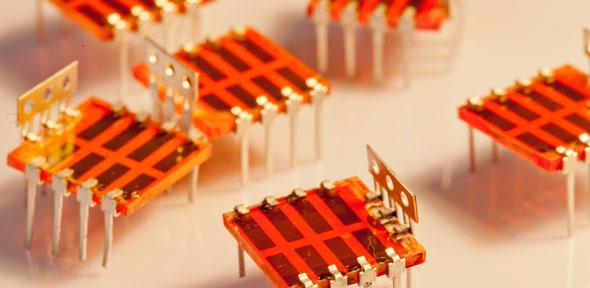Traditionally, the goal of high power conversion efficiency in thin film solar cells has been compromised by opposing optical and electrical constraints – while a cell needs to be thick enough to absorb adequate amounts of light, it must also be thin enough for the extraction of current. Rising to this “thick and thin” challenge, researchers at Boston College have designed a nanoscale solar cell based on the age-old technology that created the coaxial cable, promising a higher conversion efficiency than any thin film solar cell yet seen.
Dubbed “nanocoax”, the cell features solar architecture that makes it thick enough to capture light while being sufficiently thin to promote a more effective elicitation of current. Using the coaxial concept initially conceived in the 1800’s, the Boston College research team devised a method of cell creation that does not require crystalline materials.
According to professor of physics Michael Naughton, “Many groups around the world are working on nanowire-type solar cells, most using crystalline semiconductors. This nanocoax cell architecture, on the other hand, does not require crystalline materials, and therefore offers promise for lower-cost solar power with ultra thin absorbers. With continued optimization, efficiencies beyond anything achieved in conventional planar architectures may be possible, while using smaller quantities of less costly material.”









